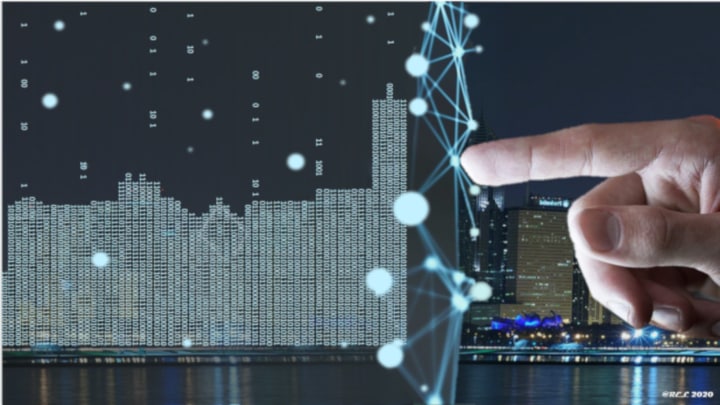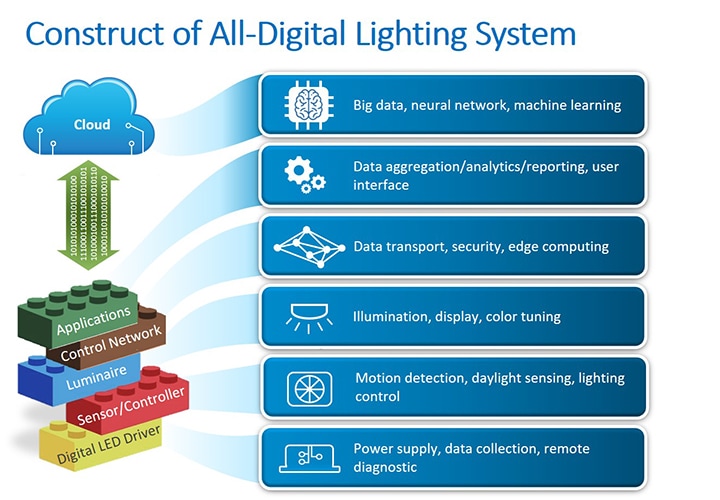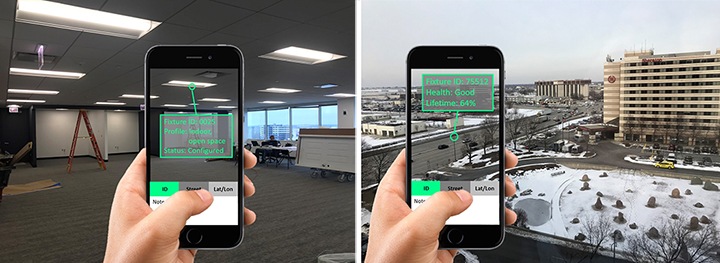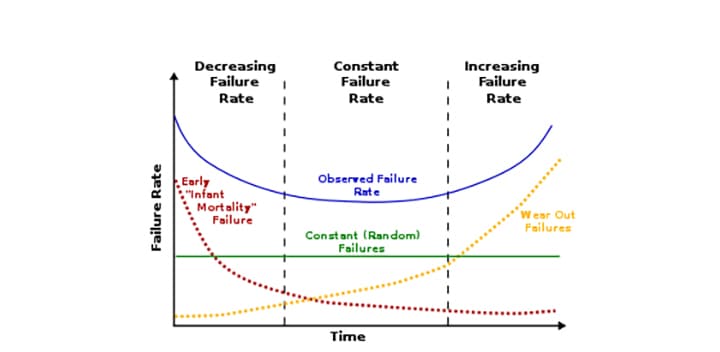
I hope all of you are as excited as I am that a new decade is upon us once again. Besides setting high aspirations and getting ready to tackle new challenges, you might also be wondering what the future of lighting might look like 10 years from now. With such a dazzling transformation and digitalization that we are witnessing in the lighting industry now, how could anyone predict what the industry might look like in the next 5 years, let along 10 years? The answer is pretty evident, if you pay attention to some of the key technological advancements that are already taking place outside of the lighting industry. These advancements will further transform our industry within the next decade.
Technology foundation of the future
Primarily three disruptive technologies will shape our future:
Many of you probably already knew about machine learning or artificial intelligence. It is the concept of using advanced algorithms and computation power to crunch massive amounts of data. Through this iterative computation process, the “machine” can derive useful insights or actional intelligence from the massive amounts of data. There are already many real-world applications of machine learning, from the game of Go to autonomous vehicles, just to name a few.

For augmented reality, many of us probably got our first taste in 2016 when the mobile game Pokémon Go took the gaming industry by storm. We witnessed firsthand how augmented reality technology can seamlessly integrate virtual objects into our physical world through the built-in camera of a mobile phone. While the concept of augmented reality has been ingrained in the minds of many through gaming, there are other more practical applications for the lighting industry.
Finally, an all-digital lighting infrastructure is arguably the most important building block for the future (Figure 1). It will be the underpinning digital foundation that will fully realize the potential of machine learning and augmented reality for the lighting industry. By all-digital I do mean every component of the lighting system, including the light source (e.g. LED), sensors, LED drivers, and of course the control system.
Mirror world is a “digital twin”
What do I think the lighting industry will be like in 2030? The answer lies in a future state called the mirror world. A mirror world is a digital replica, or “digital twin”, of the physical world that we occupy today. The term mirror world is first coined by the Yale University computer scientist David Gelernter in 1991. The scope of the digital world has no boundary and can only be limited by our imaginations. It would make Pokémon Go look ancient in comparison.

Lighting industry in 2030
For the lighting industry, many potential new cases in the mirror world will transform the current mode of operation. Let’s look at two examples. For initial lighting system design, a lighting designer, with the client next to him or her, could visualize how the various lighting options would look like at the job site through augmented reality. As you can see from Figure 2, you could use a smartphone (or may a tablet, a pair of smart glasses, or the ultimate wearable, a pair of smart contact lenses) to enter the mirror world. Imagine the richness of user experience, and the unprecedented level of engagement, not to mention the design flexibility, that you could achieve by walking around the mirror world to preview how the new lighting system would look like.

When it comes to field maintenance, the convergence of data, augmented reality, and machine learning will truly transform the lighting industry. First, the data collected by an all-digital lighting infrastructure is essential for diagnostics and root-cause analysis. Advanced data analytics and machine learning could potentially speed up the detection of an early “infant mortality” failure as well as provide recommendations that minimize premature wear out failure (Figure 3). And when the technicians or facility managers do set foot at the job site, through the mirror world they could walk up to the fixtures that need attention, access all the unique identification and diagnostic information associated with the fixture, and correctly address the issue the first time and every time.
What I’ve described may sound far-fetched, but the reality is that for the lighting industry, all three underpinning technologies are within reach. It’s just a matter of time before all three are integrated in a way that can provide a seamless user experience.
How do we get there?
For the lighting industry, a key step we need to take collectively is to build-out the all-digital lighting infrastructure. Without taking this important first step, the digital data, or the lifeblood of the mirror world, would be missing, and the full potential of this brave new world won’t be realized. The Advance Xitanium SR LED drivers from Signify, with built-in memory to store info such as the make/model as well as the diagnostic data, is well suited for the all-digital lighting infrastructure. They are not only designed to meet the highest quality standards, but are also compatible with leading indoor, industrial, and outdoor wireless lighting control solutions from around the world.
An all-digital lighting infrastructure that is based on the Advance Xitanium SR LED drivers have several advantages over other commercial wired alternatives that use Power-over-Ethernet (PoE) or 0-10V for control. That is because wireless control systems are inherently faster to install. The Advance Xitanium SR LED drivers also provide an unmatched amount of diagnostics information through built-in memory. Best of all, these “digital LED drivers” support the open-standard digital interface, which enables greater design flexibility with the lighting control solutions of your choice.
Summary
With the rapid technological advancement in machine learning, augmented reality, and LED lighting systems, digitalization of our physical world—through the embedded sensors and the Internet of Things—is inevitable. Within this decade, the mirror world will start to take shape and its transformational impact will be felt by everyone in the lighting industry. That is why every LED lighting system retrofit, and every new installation, presents a golden opportunity to lay down the foundation for a “future-proof” all-digital lighting system. If the average lifespan of an LED system is 10 years or perhaps more, and the incremental cost of an all-digital system is very modest, doesn’t it behoove us to go for an all-digital lighting system for every opportunity that we have today?

November 14, 2023
How lighting technology can help reduce risks to migrating birds